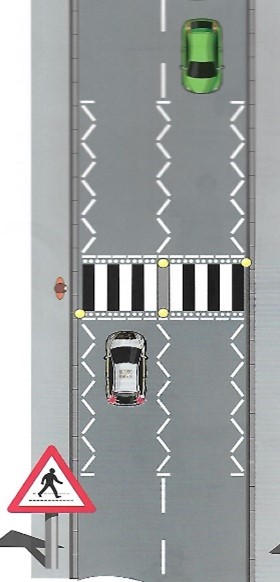zebra

Zebra crossings are uncontrolled crossings and can be identified by the flashing yellow beacons on both sides of the road as well as the black and white stripes that are painted on the crossing.
They will also have zig zag white markings on both sides of the crossing and give way line approximately a metre from the crossing to indicate where drivers should stop to give way to the pedestrians.
Where there is a central island in the middle of the zebra crossing, each half should be treated as individual crossing. However you should still be checking across both sides of the road for any pedestrians that may reach ‘your crossing’ as you approach. Once the pedestrian has crossed you and reached the central island and it is safe to do so you may continue on.

On approach to a zebra crossing you should slow down and stop to allow pedestrians to cross who are waiting on the pavement at the crossing and clearly want to cross. You should also be aware of pedestrians who are approaching the crossing as they may step out if they see any gaps in the traffic.
Particular care and attention should be given to children, elderly or those with pushchairs and prams. Where traffic is heavy they may hesitate to cross, you should therefore slow down and stop if safe to do so.
You must give way to anyone who:
- Is already crossing
- Has stepped onto the crossing
Do not wave people across a zebra crossing, there could be vehicles approaching in the other direction that you can not be sure will stop.
Pedestrian use: give traffic in both directions plenty of time to see you and to stop before stepping out
